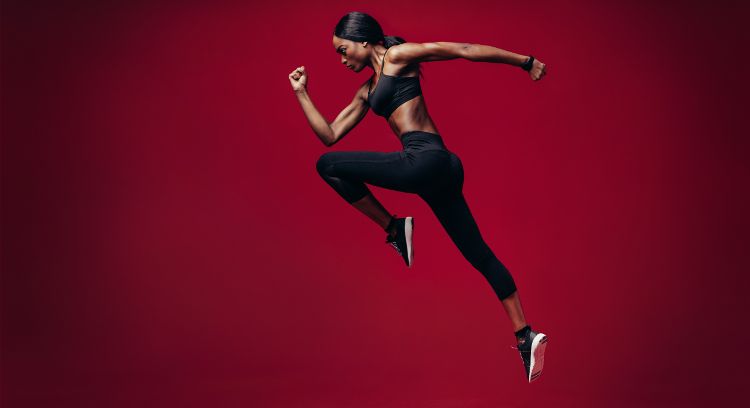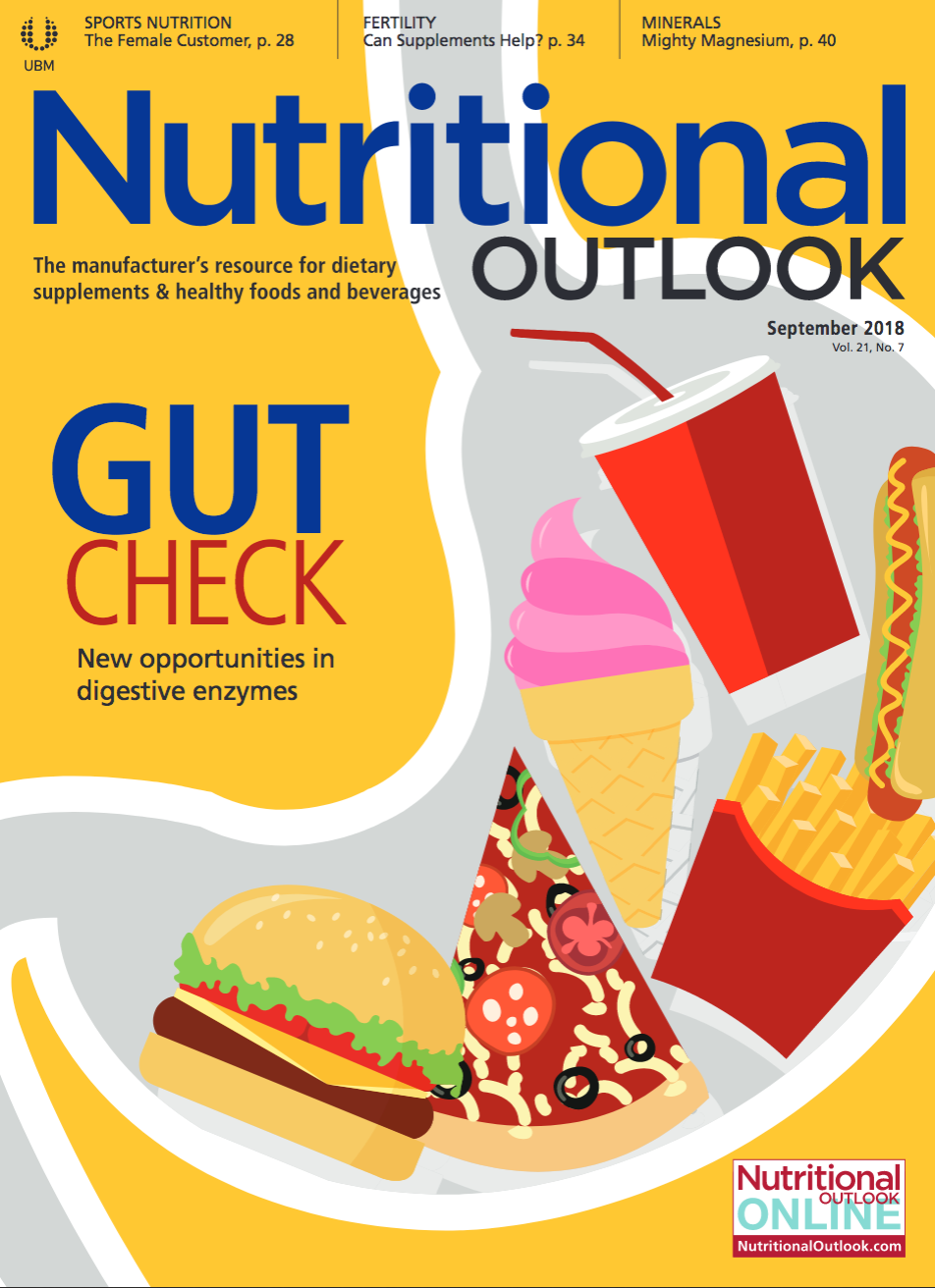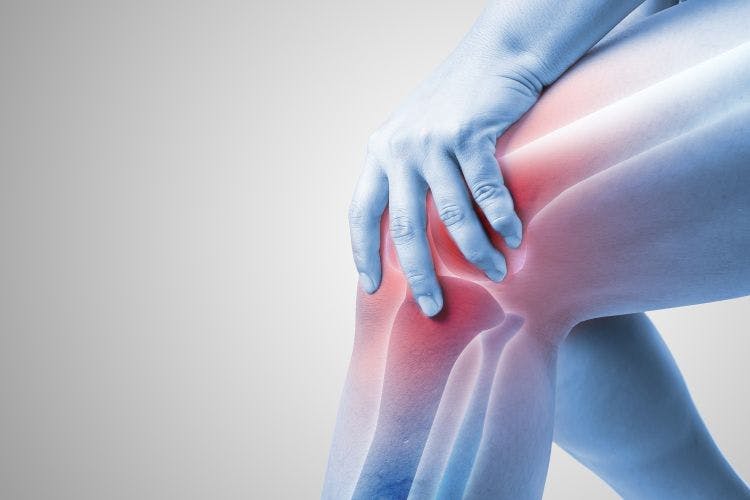Are sports supplements meeting women’s needs?
Can formulators do better?
Photo © Shutterstock.com/Jacob Lund

When President Richard Nixon signed Title IX into law in 1972, just one in 27 girls participated in high school sports; 40 years after the landmark statute put an end to discrimination on the basis of sex in federally funded education programs, that proportion had risen to about two in five, according to the Women’s Sports Foundation.1 In those same four decades, women’s participation in college athletics vaulted more than 600%.
Add to that the strides that female athletes have made in Olympic competition, World Cup soccer, and traditionally male-dominated pursuits like body building and basketball and the conclusion is clear: The days when “You play like a girl!” were an insult are over. After all, who wouldn’t want to play like Serena Williams, or swim like Katie Ledecky?
But while women’s sports have come a long way, women’s sports nutrition still seems stuck in a pre-Title IX era wherein not nearly as much effort goes into understanding, let alone formulating for, the unique needs of athletic or even just active women as goes into doing so for men.
All of which suggests that it’s time for some affirmative action in the dietary supplement and functional foods space. As Bruce Brown, president, Natreon Inc. (New Brunswick, NJ), says, “As more women find opportunities to embrace a healthy lifestyle in everything from fitness routines to the foods they eat, sports nutrition brands will respond by investing in innovative ingredients with targeted benefits, rather than solely focusing on male-centered formulations.”
Good Sports
High-profile female athletes are only the tip of a spear launching women of all ages, sizes, and interests into active lifestyles that place as much emphasis on wellbeing as on winning competitions or losing weight. This movement isn’t so much about staying skinny or being first across the finish line; rather, the goal is to feel better, in body and mind.
Notes Nina Hughes-Likins, global marketing director, Prinova USA (Hanover Park, IL), “Women are realizing that working out isn’t just a component of a fleeting fad diet, but actually benefits them mentally and physically. Strength is empowering: it produces visible results and fosters a more consistent fitness regimen.”
Elyse N. Lovett, MBA, MS, marketing manager, Kyowa Hakko USA (New York City), agrees. “We’ve entered the age where ‘strong is the new skinny’-where women all over the world are looking at Olympians and strong, fit influencer moms as role models when it comes to body image.” The upshot: Statista research2 found that, on average, 17.8% of the domestic female population engaged in sports or exercise every day in 2017, compared to 15.6% two years prior.
Fitness Fuel
It should come as no surprise that all those bodies in motion generate growing demand for sports nutrition products designed to fuel their next fitness session-or reward the one just completed. And the fact that this market is entirely female signals a turning point for the entire category.
Carolina Ordonez, senior consumer health analyst, Euromonitor International (Chicago), sees it as a broadening. “Historically, female bodybuilders and athletes were the ones more interested in sports nutrition. But with sports nutrition’s consumer base expanding, more women are following fitness trends and looking for sports nutrition products that can support their fitness goals.”
To Emily Pankow Fritz, PhD, technical services manager, active wellness platform, human nutrition & health division, Kemin (Des Moines, IA), it’s all of a piece with the changes reshaping the category. “Ten to 15 years ago, sports nutrition products were exclusively used by bodybuilders and professional athletes. Now, the category is sold in mass merchandisers, welcomes a wider range of consumers, uses more creative formats, and has broader claims aimed at overall health and wellness. Overall, the definition has expanded to be more inclusive and active, and provides a broader definition for consumers to identify with,” she says.
Vive la Difference
And female consumers are identifying, in droves. But whether they realize it or not, their identity as females plays a fundamental role not only in determining which sports nutrition products best suit their needs, but how their bodies respond to sport in the first place.
“Women’s bodies are biologically and physiologically different from males’,” Hughes-Likins says, noting that the former carry 6%-11% more body fat than the latter, “likely due to estrogen, as it suppresses fat oxidation, making it more difficult for women to lose fat.” Women also metabolize some nutrients differently than do men, resulting in higher requirements for iron, calcium, vitamin D, and folate, to name a few.
Adds Sandy Chien, PhD, vice president of innovative products, Horn (La Mirada, CA), “Women also have lower sweating rates than men, mostly due to a lower metabolic rate and smaller body mass. And women have to deal with the rise and fall of estrogen and progesterone, which affects energy and water retention, as well as physical performance.”
Indeed, it’s this ebb and flow of reproductive hormones-including luteinizing hormone and follicle stimulating hormone-that accounts for what Pankow Fritz calls “the most obvious differences” between men’s and women’s metabolic profiles and optimal energy intakes.
Consider pregnancy and lactation, which pose “unique nutritional needs outside the context of activity level,” Pankow Fritz continues. “Increases in recommended energy and micronutrient requirements during pregnancy and lactation are focused on optimizing fetal development and preventing nutrient deficiencies; the demands of physical activity add another layer of complexity, and sports nutrition supplementation adds yet another.”
How Little We Know
Of course, not all active women are pregnant or lactating, but even among healthy adult females who aren’t, “the demands of exercise impact energy, micronutrient and mineral needs depending on the exercise volume and intensity, and on dietary intake,” Pankow Fritz reiterates. The catch: “There are currently no official nutrient dietary recommendations based on exercise volume and activity level that are specific to gender.”
“Some of the broader conclusions about the nutritional needs of active females are inferences or culminations of understanding about the physiological differences between males and females, and how the context of exercise might affect nutritional needs,” Pankow Fritz explains. And though these conclusions give us an idea of why men’s and women’s needs differ, “they don’t provide us with evidence of how these differences might affect sports performance, or how they can be addressed with supplementation.” This underscores the need for more research.
Alas, a 2017 study3 published in the European Journal of Sport Science found that among the more than 6 million participants tracked in the 1,382 sports and exercise medicine research papers that the researchers analyzed, only 39% were female.
Sports and exercise nutrition research has historically focused on healthy males aged 18 to 35, perhaps because “some researchers believe that conducting clinical research on females requires extra steps, and that the results could be swayed by the complexity of the menstrual cycle,” Hughes-Likins says. And the need to administer pregnancy tests to potential subjects adds to already weighty research costs. Nevertheless, says Hughes-Likins, “Claims based on clinical research performed on men may not be applicable to women.”
That said, the situation may be headed for a turnaround. Although precious little research has investigated sports nutrition supplements or dietary interventions specific to females, Pankow Fritz says, “this is where ongoing efforts to close the gap are focused: researchers are making attempts to include both women and men in clinical trials so that we can substantiate efficacy in both genders.”
What Women Want (from Sports Nutrition)
Until they do, sports nutrition marketers don’t have much concrete information to go on when formulating for women’s sports nutrition needs. In the absence of targeted nutritional strategies, they may find themselves leaning more toward targeted concepts. And that requires asking active women not what they need, but what they want.
“Many women are looking for products that enhance their workouts holistically by reducing stress, increasing restful sleep, or providing lean muscle building rather than bulk,” says Brown. “Furthermore, natural and non-GMO ingredients continue to gain momentum.”
Ordonez points to a rough consensus among experts that as go Millennial women, so goes the gender in general. “After discussing this topic with sports nutrition players,” she says, “we all agree that Millennial moms are becoming a very important target in sports nutrition.” Female Millennials spend two times more on self-care than Boomers, she notes, adding, “This female consumer is very educated and looks for sports nutrition products that represent her values: transparency, organic, non-GMO, plant based, few natural ingredients, local sources, vegan or vegetarian, and so on.” Credibility matters, too, and brands that have it include Truvani and Clean Machine, Ordonez says.
But a product needs more than progressive bona fides to succeed with active women. It also needs to produce a palpable effect. “Females love products that make them feel good-they love to ‘feel’ something,” Lovett says. “While improving their outer image is important, their inner ‘feeling’ is just as important. So, I think products that can enhance their active nutrition performance while making them feel great will be key drivers for the category.”
And do us a favor: make women’s sports nutrition products easy to use, and to behold. As Chien says, “Women prefer delivery systems with easy use, such as sachets and drinks instead of powders. They also prefer vibrant, bright colors with simple, clean packaging and messaging compared to the color black marketed to men.”
Make Your Ingredients Count
So, looks do count. But ingredients count more. And even in the absence of conclusive science on women’s sports nutrition needs, “Companies that offer innovative ingredients backed by clinical research are filling the gap” in products directed toward women, Brown says.
Of course, protein ingredients are as popular with active females as with everyone else, and James Komorowski, chief science officer, Nutrition 21 (Purchase, NY), says that athletic women “increasingly look for quicker ways to incorporate more protein into their diets for sustained energy and satiety and to help them achieve their health goals. This has shifted the protein market over the last decade away from a concentrated focus on sports nutrition consumers toward a wider focus on consumers interested in improving consumption to help improve general health.”
Collagen protein in particular is attracting attention, and as Aouatef Bellamine, PhD, senior scientific manager, consumer health & nutrition, Lonza Nutrition & Health (Basel, Switzerland), points out, it has special relevance for female athletes. “As young women tend to be more prone to ankle injuries,” Bellamine explains, “they may need appropriate joint-support supplementation.” Her company’s UC-II undenatured type II collagen from chicken sternum cartilage offers formulators a “natural, effective option for women’s sports nutrition products” with plenty of science supporting its role in joint health, she says.
Komorowski adds that active women might appreciate his company’s Velositol blend of amylopectin and chromium, which studies show helps the body mobilize the branched-chain amino acids (BCAAs) in dietary protein to accelerate muscle protein synthesis (MPS)-“key to enhanced muscle growth and quicker muscle recovery,” he says. “This is relevant for active and athletic women who want to amplify the effect of protein or BCAAs on muscle growth. And because less protein is needed to boost MPS, it’s also relevant to those who want more impact from their protein with fewer calories.”
Another “focal point” for female active nutrition involves increasing energy, enhancing mental focus, and heightening cognitive function, Komorowski continues. “Nootropic supplements have been on the rise and are geared toward improving focus, mental acuity, and energy. Consumers looking for products with a nootropic effect are growing more interested in ‘naturally’ boosting energy and focus without caffeine, jitters, or a crash.” Nutrition 21’s Nitrosigine ingredient combines the amino acid arginine with silicon, stabilizing the blend with inositol, a carbocyclic sugar sometimes referred to as vitamin B8. Clinical results indicate that it improves processing speed and executive function and increases energy levels without changing heart rate or blood pressure.
Not quite a vitamin and not quite an amino acid, L-carnitine is perennially popular with the gym crowd who prize it for its purported fat-burning and performance-boosting properties. But because Lonza’s Carnipure brand of the ingredient “is flexible and adaptable for the sports nutrition market,” Bellamine says, “it lends itself to the growing requirements of active and athletic women. Studies show it provides significant recovery benefits by reducing tissue damage, muscle soreness, and injury after exercise. It’s also been proven to help improve cardiovascular health by enhancing endothelial function through increase blood flow.”
Also a boon to fitness recovery is curcumin (Curcuma longa), “which has a myriad of health benefits including anti-inflammation and delayed-onset muscle soreness prevention,” says Mariko Hill, product developer at Gencor Nutrients Inc. (Anaheim, CA). Gencor and its partner Pharmako Biotechnologies (New South Wales, Australia) offer formulators Hydrocurc, a cold-water-dispersible curcumin ingredient with 90% loading that functions in effervescent, capsule, and powder formats. “Its application in effervescent tablets with its natural orange color and flavor is perfect for the category, as its ability to form stable dispersions in water reflects the ease of use in a sports or on-the-go setting,” Hill says.
The more that formulators turn to ingredients like this and others, the better able they’ll be to create sports nutrition products that “serve female consumers more effectively than they have in the past,” Hill says. “The focus on women’s sports and active nutrition will have a significant impact on the sports nutrition space. As consumer awareness of health and wellness increases, female consumers will soon gravitate toward this trend to incorporate a healthier lifestyle.”
References:
- Women’s Sports Foundation. “Get your game on, girls! Celebrating the 40th anniversary of Title IX.” www.womenssportsfoundation.org/media-center/press-releases/press-release-june-23-2011/
- Statista. “Percentage of US population engaged in sports and exercise per day from 2010-2017.” 2018.
- Costello JT et al. “Where are all the female participants in sports and exercise medicine research?” European Journal of Sport Science, vol. 14, no. 8 (April 25, 2014): 847-851

Prinova acquires Aplinova to further increase its footprint in Latin America
April 7th 2025Prinova has recently announced the acquisition of Brazilian ingredients distributor Aplinova, which is a provider of specialty ingredients for a range of market segments that include food, beverage, supplements, and personal care.





















